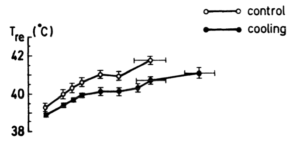With more people working from home than every before, there’s a new question: am I walking my dog too much?
And indeed, over the past year we have seen many dogs over-exercised. But then there are dogs like my Loki. One day last week he pulled me for 25km and then ran laps around the yard afterwards!
So it’s complicated, and there’s no one answer. Each day and each dog is going to be different.
How To Decide How Much To Walk A Dog
The most important thing is to listen to your dog. If they show reluctance, or start slowing down, then you are going too far.
However, if you rely solely on your dog telling you when to stop, you could still badly overestimate what they should do.
The problem is that most owners don’t recognise that dogs will overexercise if allowed. They live in the moment and don’t foresee the price they’ll pay later.
Therefore, you have to be your dog’s brains. In order to decide on how far you can go, you need to consider a number of factors. These include:
- Age
- Health
- Body weight
- Breed
- Environmental temperature and humidity
- Personality factors & type of exercise
- Previous fitness
Some of these are obvious, and some aren’t. I’ll go through each in turn.
Age
This is the easiest one. Nobody expects an old dog to be able to walk as far as a young one. However, there’s still a lot to know.
Puppies right up to maturity do not have the fitness of adults. There’s also a risk of causing damage. This is such a big topic that you’ll find a separate article on how far to walk a puppy.
As for older dogs, age alone is less of a factor than people expect. Most breeds up to 12 years of age can still walk further than their human companions. It’s more that age is often associated with health problems. Therefore, if a dog is slowing down, it’s essential to get a checkup.
Health Problems
Almost any illness will cause a dog to not be able to walk as far as before. Perhaps the three most common are:
You can read more about each at the links, but the important point is this: these are all treatable conditions. With the therapies found at the linked pages these dogs should still enjoy a daily walk. I take my 16 year old out every day, just not far or fast.
And in fact a point I often make to owners of dogs with heart murmurs is that daily moderate exercise is a good thing. It not only probably delays progression, but it’s an excellent way to spot the early signs of deterioration.
Body Weight
A highly reversible health problem is being overweight. This can dramatically reduce a dog’s stamina, depending on how much excess weight is being carried. If you leave it there too long, it will also lead to a faster onset of arthritis and other joint problems.
Therefore, if you are interested in long walks with your dog, you should make sure they are at ideal condition. If needed, read our page full of positive tips to help dogs lose weight.
Breed
Breed probably matters less than most people think, just because dogs are intrinsically such good walkers. However, here are some points to consider:
- Toy breeds will have reduced distances, just due to their short stride length
- Giant breeds like Great Danes, Newfoundlands and St Bernards do not seem suited to long walks
- Breeds with dense double coats will overheat under cooler conditions
- Flat-faced breeds like French bulldogs also overheat more due to less efficient panting
Temperature & Humidity
Failing to recognise when a dog is getting hot is probably the number one mistake dog owners make. I’ve already pointed out that some breeds are at higher risk, but it will happen to any dog under the wrong circumstances. What people don’t know is just how ‘normal’ those conditions can be.
I have always said that 26 degrees Celsius at the time of walking is the warmest at which a dog should be exercised. The following results confirm this.
Study 1 was done in Labradors with 30 minutes of loose leash walking in the sun at temperatures between 27.5 and 31ºC (18-88ºF). The result? Their average body temperature reached 42 degrees!
Afterwards, a 15-minute cooling period was inadequate for 80% of the dogs to achieve baseline temperatures
Study 2 under conditions of 28-29.4ºC and humidity of 50% did the following:
- 5 minutes of search
- 5 minutes of rest in the shade
- 5 minutes of agility
- 5 minutes of rest in the shade
- Maximum 10 min of ball retrieve
- Light trotting/quick walking for 5 min
The result? Body temperatures ranging from 40.3 to 42.4ºC.

Just to show that overheating can occur at even colder temperatures, here is an older and very unethical study. The graph shows two groups of dogs who were run on an inclined (uphill) treadmill at 20°C. Those without ice packs became severely overheated in 1 hour.
Personality Factors & Type Of Exercise
A dog’s temperament and the exertion level will also heavily influence the amount of walking they can tolerate. Once again, this is mainly about heat generation.
Dogs who are excitable and pulling will overheat or tire much faster than those on calm, loose-leash walks. Dogs obsessed by chasing birds or balls will overheat extremely quickly.
Sometimes it’s about knowing your dog and taking frequent breaks. Other times it’s about attending dog training or using better harnesses, not collars as restraint.
We should also spare a thought for anxious dogs. Even after medication I have seen some who were honestly better off not walked at all. It just depends on what makes them happiest.
Previous Fitness
Even if everything else is OK, you still can’t just go out and do 25 km from scratch. You have to build up your dog’s stamina gradually.
Most dogs can handle 5 km (3 miles) without extra training but need at least a month to get up to 20 km. Walks above 5 km should always be followed by a light rest day.
If you go too far too quickly you could cause all sorts of muscle, tendon, ligament, joint or bone problems. Building up gradually also allows you to see if your dog has any restrictions or limitations that will prevent them going longer distances.
Most practically, it allows them to build up harder pad surfaces. Just like us, if they overuse their soft pads they will end up with painful blisters and ulcers.
So How Far Can A Dog Go?
Dogs in their wild state probably range further over a day than any dog owner has the time to do. Therefore, if none of the important warnings above apply to your dog, then there’s no obvious limit if the pace is gentle.
Just make sure they are enjoying it, and not just doing it because you want them to. This can be very hard to tell sometimes.
If you’re managing 30 minutes twice a day for your dog, then you should never feel guilty about not doing more. But you don’t have to feel guilty about going a lot further either!
You might also like: An Epic Adelaide Parklands Dog Walk
Have something to add? Comments (if open) will appear within 24 hours.
By Andrew Spanner BVSc(Hons) MVetStud, a vet in Adelaide, Australia. Meet his team here.
Sources
Baker JA, Davis MS. Effect of conditioning on exercise-induced hyperthermia and post- exercise cooling in dogs. Comp Exerc Physiol. 2018;14(91–97):10–3920.
Kozlowski, S., Brzezinska, Z., Kruk, B., Kaciuba-Uscilko, H., Greenleaf, J. E., & Nazar, K. (1985). Exercise hyperthermia as a factor limiting physical performance: temperature effect on muscle metabolism. Journal of Applied Physiology, 59(3), 766-773
Neander, C., Baker, J., Kelsey, K., Feugang, J., & Perry, E. (2019). The effect of light vs dark coat color on thermal status in Labrador Retriever dogs. BioRxiv, 639757
Robbins PJ, Ramos MT, Zanghi BM, Otto CM. Environmental and Physiological Factors Associated with Stamina in Dogs Exercising in High Ambient Temperatures. Front Vet Sci. 2017;4(1–9):10–3389.

